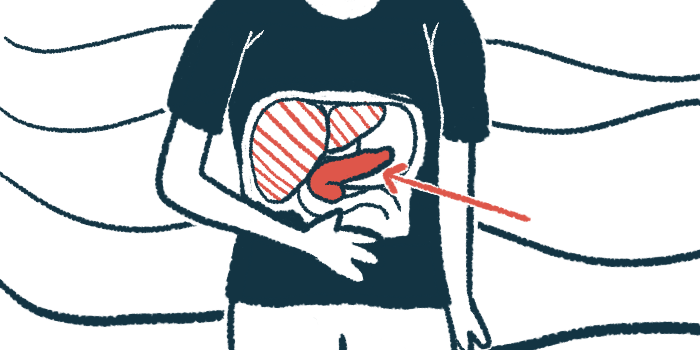Fewer CFRD pancreas GLP-1 receptors may curb insulin secretion
CFRD patients have lower production of triggering receptor, study finds
Written by |

People with cystic fibrosis-related diabetes (CFRD) have lower pancreatic production of the GLP-1 receptor (GLP-1R), a protein that binds the hormone GLP-1 and triggers insulin secretion, a study reported.
“Signaling of GLP-1 (and its ability to enhance insulin secretion) may be impaired as a result of reduced GLP-1R availability,” the researchers wrote. The findings illuminate potential targets for therapeutic intervention to improve pancreas function in CFRD, they noted.
The study, “Cystic fibrosis-related diabetes is associated with reduced islet protein expression of GLP-1 receptor and perturbation of cell-specific transcriptional programs,” was published in Scientific Reports.
The abnormally thick mucus that characterizes cystic fibrosis (CF) can damage the pancreas and reduce the production of insulin, a hormone that helps cells absorb glucose from the blood, commonly called blood sugar, to be used for energy. Without sufficient insulin, glucose levels in the blood become too high, resulting in diabetes, which affects nearly half of all CF adults.
Typical CFRD treatment involves monitoring blood sugar levels and using insulin injections or pumps to keep glucose levels within the normal range, alongside maintaining an active lifestyle and eating a healthy diet.
Signaling in CFRD
Glucagon-like peptide-1, or GLP-1, is a hormone that triggers insulin secretion after it binds to GLP-1 receptors (GLP-1Rs) on beta cells within pancreatic islets, or regions of the pancreas that contain hormone-producing cells.
It’s not known whether GLP-1 and/or GLP-1R signaling is impaired in CFRD. “If such impairments do exist, strategies to enhance levels of GLP-1 and/or GLP-1R signaling could be effective in increasing insulin release in CFRD,” the researchers wrote.
The research team at the University of Washington compared levels of GLP-1 and GLP-1R in pancreas tissue from people with CF or CFRD to age-matched individuals without CF or diabetes. Pancreatic tissue was obtained from autopsies (group 1) or organ donors (group 2). In both groups, CFRD patients had diabetes for about four years.
An examination of pancreatic tissue from group 1 found the mean area of islets was similar among CF, CFRD, and controls. Still, GLP-1 levels per islet area were higher in those with CFRD than CF alone and significantly higher than controls. Similar results were observed when group 2 pancreatic tissue from CFRD and controls was examined.
In comparison, GLP-1R protein levels per islet area in group 2 samples were significantly reduced — about 77% lower — in CFRD patients than in controls. Insulin levels per islet area were also significantly reduced in CFRD.
“We observed a significant reduction in islet GLP-1R protein levels in CFRD pancreas, regardless of whether we expressed GLP-1R area relative to total islet area or insulin-positive islet area,” the team wrote.
Gene expression
A gene activity analysis of pancreatic tissue showed numerous genes expressed at different levels in CFRD samples compared with controls. These changes occurred in both alpha cells, which produced glucagon, and in insulin-producing beta cells.
Pathways with increased gene activity in alpha cells from CFRD over controls included those involved in immune responses and inflammation. Some pathways in beta cells were similarly enriched, but the activity of multiple genes associated with fibrosis, or scar formation, was also elevated.
At the same time, both cell types showed suppression of several genes in CFRD samples, including those involved in the proteasome, a complex that degrades unwanted proteins, and stress of the endoplasmic reticulum, the structures within cells that help protein fold properly.
When the team focused on genes that regulate GLP-1 production, the PCSK1 gene, which encodes an enzyme called PC1/3 that generates GLP-1, was increased. Moreover, the PCSK1N gene, which encodes a protein that blocks PC1/3, was reduced. No such changes were seen in GLP-1-associated genes in beta cells.
The results suggested that “enhanced PCSK1 expression [represents] an attempt to compensate for defective [beta]-cell function in CFRD,” the team wrote.
“Our findings suggest that intra-islet GLP-1R signaling may be impaired in humans with CFRD due to a reduction in [beta]-cell GLP-1R protein expression,” they wrote. “These novel findings illuminate potential targets for therapeutic intervention to improve islet function in CFRD, including strategies to restore islet protein levels of GLP-1R and/or promote intracellular signaling beyond GLP-1R,” they added.








